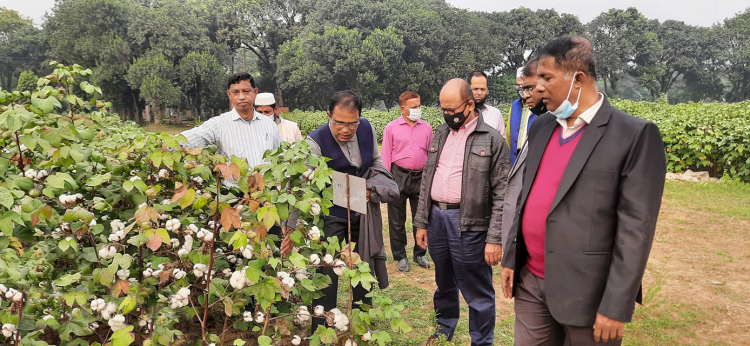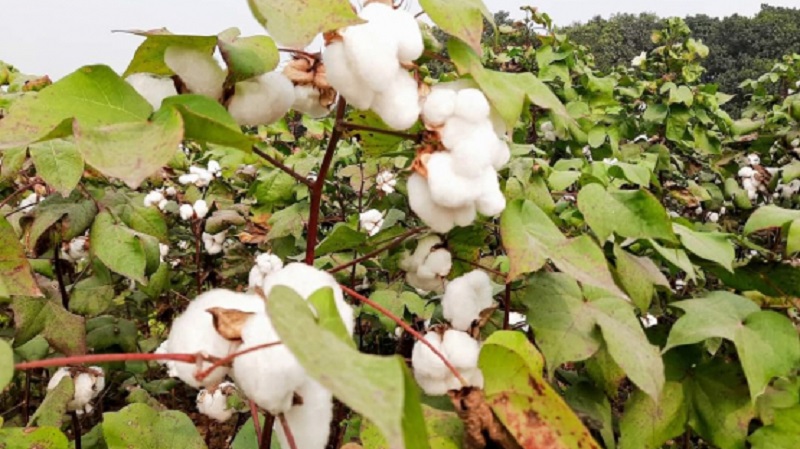DHAKA: While it took around 3,000 years to understand how to cultivate and process the first wild cotton, now with nuclear techniques, new and improved varieties have been developed in Bangladesh in record time: just five years.
Cotton has become one of Bangladesh’s most important cash crops. Known for the healthy and organic cotton fabric ‘muslin’, the textile industry directly employs over four million people — 80 percent of them women — and provides the livelihoods of millions of farmers.
Densely populated, Bangladesh’s average land size is less than one hectare per farmer, leading to very intense cultivation. To make ends meet on such small plots, farmers would need three harvests a year, but this had not been possible with traditional varieties as they take too long to grow. New varieties developed using nuclear techniques are changing that.
“Mutation breeding is a new area of research for us and we now have this new cotton variant, which can be grown in a short period of time. We expect this fast pace growth will increase yields and farmers’ income by 40 percent,” said Kamrul Islam, Senior Scientific Officer and Project Director at Bangladesh Ministry of Agriculture’s Cotton Development Board.

Kamrul Islam and his team have been collaborating with the IAEA and the Food and Agriculture Organization (FAO) of the United Nations to develop new varieties of cotton that are more productive and have better fiber quality. On March 13, 2021, marked the official release and registration of a new cotton variety, called CDB Tula-1, which was developed in a third of the time that it usually takes to develop new varieties using traditional methods, and half the time it usually takes when using nuclear techniques.
Once widely used, the new variety is expected to bring macroeconomic benefits to the country as well. Due to a lack of sufficient, high-quality domestic supply, the cotton industry is currently dependent on imports.
The alteration of the dry season and the monsoon season makes Bangladesh’s cotton particularly vulnerable, and the lack of a stable water supply year-round has caused huge losses in yields.
This will be exacerbated by climate change. Hence, developing varieties that are tolerant to climate extremes and that grow at a quicker pace has been important for the country, Islam explained.
Irradiating cotton seeds with gamma rays to induce more variation, followed by selection for performance allowed for the development of the CDB Tula 1 variety, which is high yielding, drought tolerant and resistant to diseases while delivering the third crop per year thanks to its shorter maturity and its lack of sensitivity to the length of daylight.
Mutation breeding is cost-effective and quicker than conventional breeding as it helps create numerous new genetic variations for a wider selection. By starting with so-called elite varieties for inducing genetic variation, the time to introduce additional farmer-preferred traits and develop new varieties is significantly reduced.
“Nuclear technology is helping scientists unmask the hidden potential in plants, allowing plant breeders to develop crop varieties with improved traits,” said Ljupcho Jankuloski, Plant Breeder and Geneticist at the Joint FAO/IAEA Centre and the technical officer for the project. “By using radiation and related technologies to rapidly breed improved varieties, productivity can be accelerated.”


